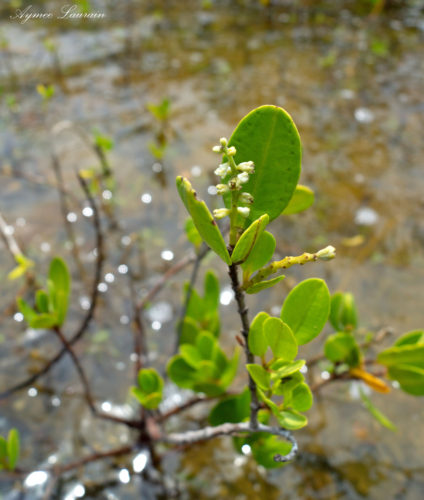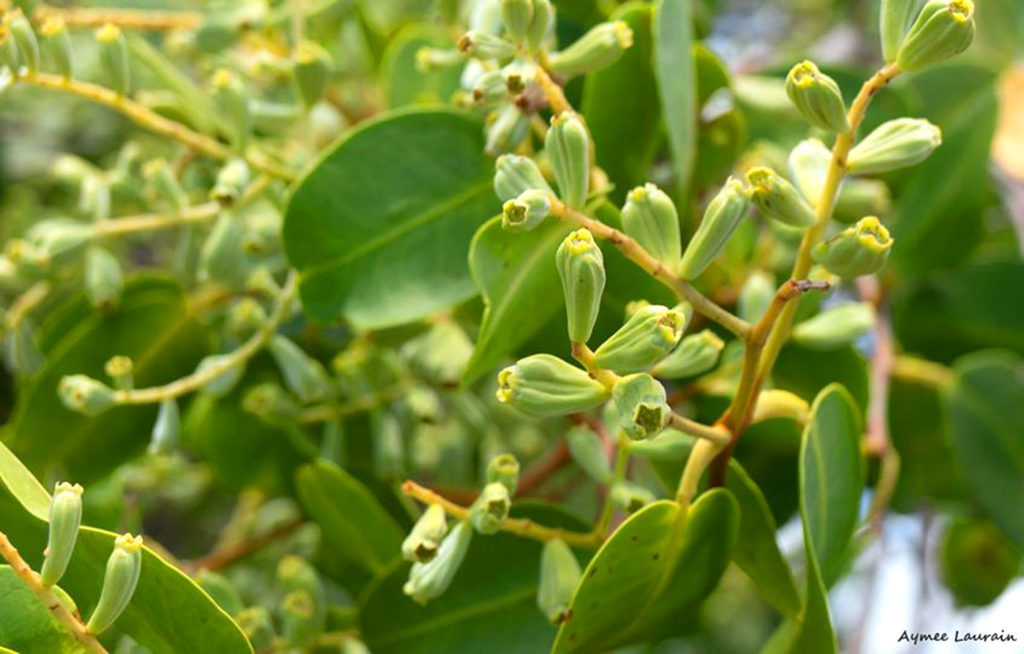White Mangrove, Laguncularia racemosa, found in Florida’s coastal ecosystems is a shrub or tree that can reach heights of 40 to 60 feet. The root system varies depending on the location. White Mangroves may have prop roots that arch away from the trunk or a limb. Other White mangroves will have cone-shaped pneumatophores that grow from the root and protrude from the ground. Greenish-white flowers bloom all year round. The flowers produce a red fruit and its seed will start sprouting while it is still on the tree. The White Mangrove’s leathery leaves are rounded on each end, are dark green on the top, and smoother and lighter green on the underside. Each leaf has two nectarines which are glands that secrete a sugary substance that many insects love.
White Mangroves play an important role in the ecosystem. They provide food, shelter, and breeding grounds for nesting birds, fish, crabs, insects, and other wildlife. They provide protection from storm surge and produce tons of leaf letter each year that benefits estuarine food chains.
Take some time to sit quietly near a Mangrove. Discover all the different animals who live there.


